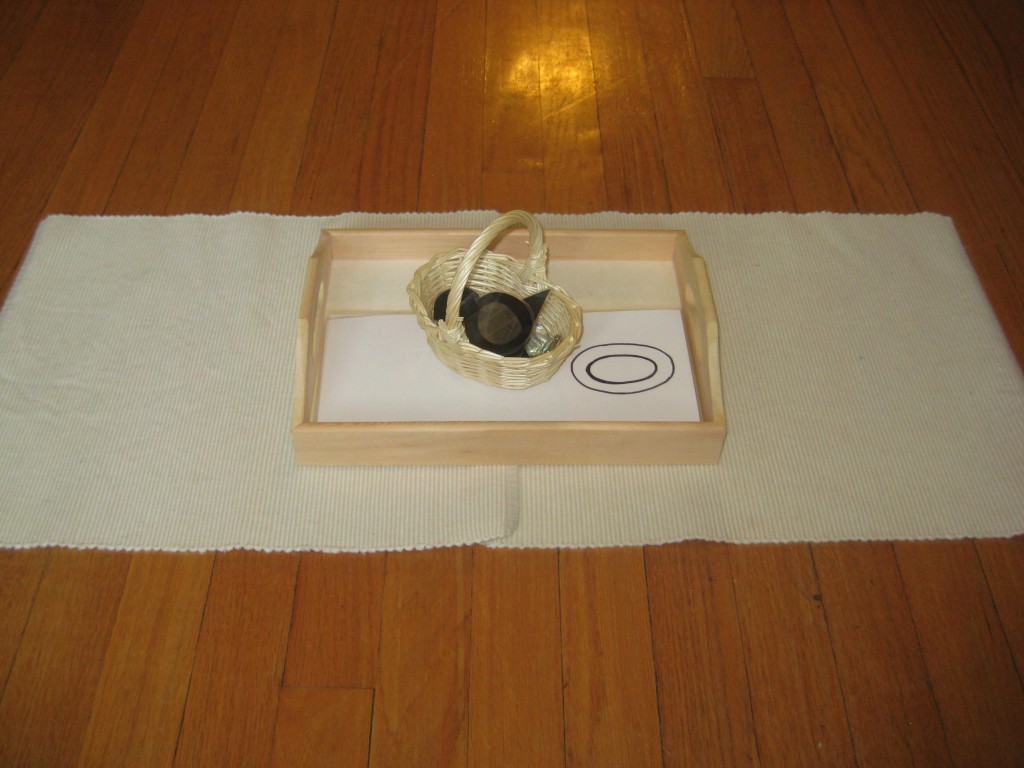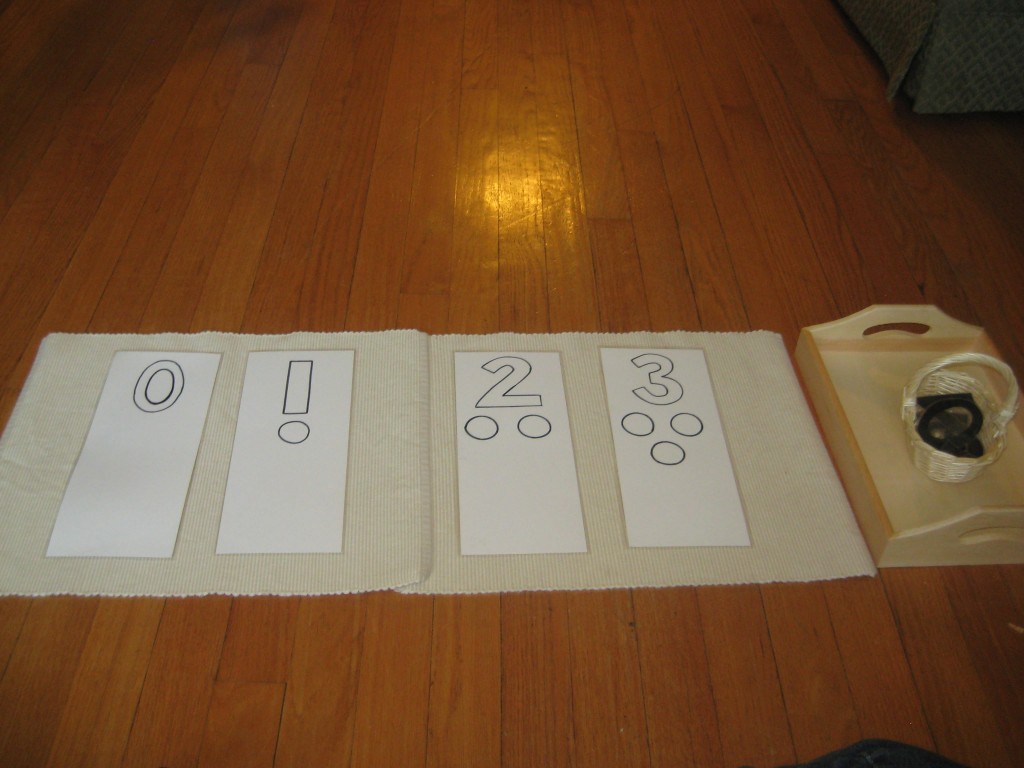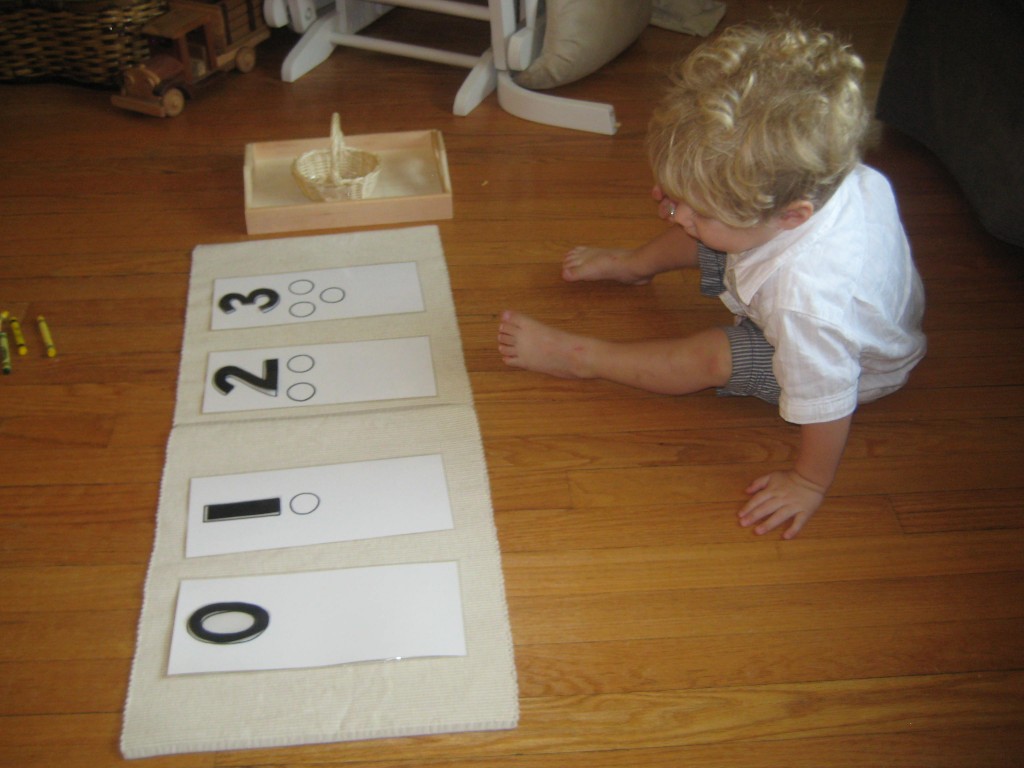Age: 18 – 24 months
Goal: To practice counting and develop fine motor skills.
Materials: mat, tray, objects to count, cards with numbers 1 to 3, numbers
Making the Materials
Numbers – To make the numbers I traced and cut out numbers 0-10 from black construction paper and had them laminated. (For this activity, I started with 0-3 and will add numbers as his skill increases.)
Number cards – I cut poster board into 5″ x 12″ sheets, traced the number at the top, and then traced the corresponding quantity of beads under the number. I prefer to have my numbers in 2 rows.
This allows an even number to have two even rows and with an odd number the final counter goes in the middle underneath the two rows. This provides the basis for introducing and understanding odd and even numbers.
Counters – I choose to use large, decorative beads I found in the floral section of a craft store. There should only be as many beads as needed. For example, in counting  0 to 3 there should only be 6 beads. This is the built-in control of error. If a child gets to 3 and doesn’t have enough beads he or she knows (or can be directed) to check their work and see if they miscounted earlier.
*If your child still puts things in their mouth please see the safety note below.
1. Prepare the work and get out the mat.
2. With the work facing the child and the mat between you (or sit on the child’s right-hand side), set the basket to the child’s right.
3. Lay the number cards on the mat starting with zero and continuing in sequential order.
4. Take the numbers out of the basket (they don’t have to be in order). Pick up the first number, name it, and place on its corresponding outline. Continue with the rest of the numbers.
5. Starting with zero tell the child that zero means nothing and doesn’t need any beads.
(In my experience, most children learn counting with 1, but when they’re introduced to tens and hundreds they struggle because they don’t know what zero is but feel compelled to give it a quantity.)
6. Continue on with the next number. Count one. With two, count – one, two and so on. This is so that the child begins to understand each number builds on the previous number and grows in quantity.
7. Once you have completed one cycle of the work, return the numbers and counters to the tray and invite the child to complete the work on their own. If the child struggles then help, otherwise allow them to work quietly.
8. Once the child has completed the work, have then return the materials to the tray and put the work back on the shelf.
Safety note: If your child is still in the stage where he or she puts things in their both, I would advise you to find a larger object to count with, only do this work with your child and then store it in a safe place out of little hands, or wait until they’re past the everything-in-the-mouth stage.


































0 comments… add one